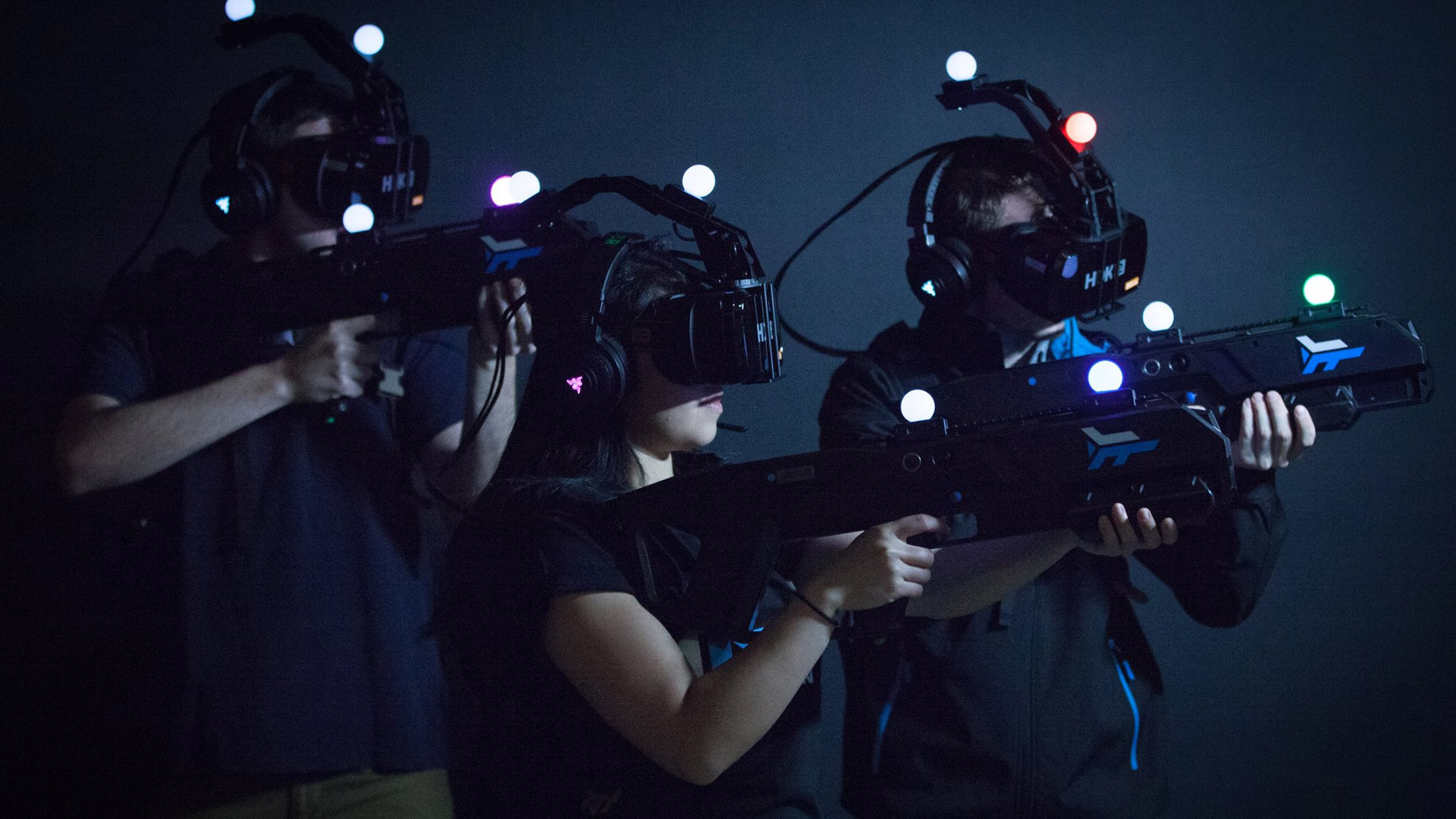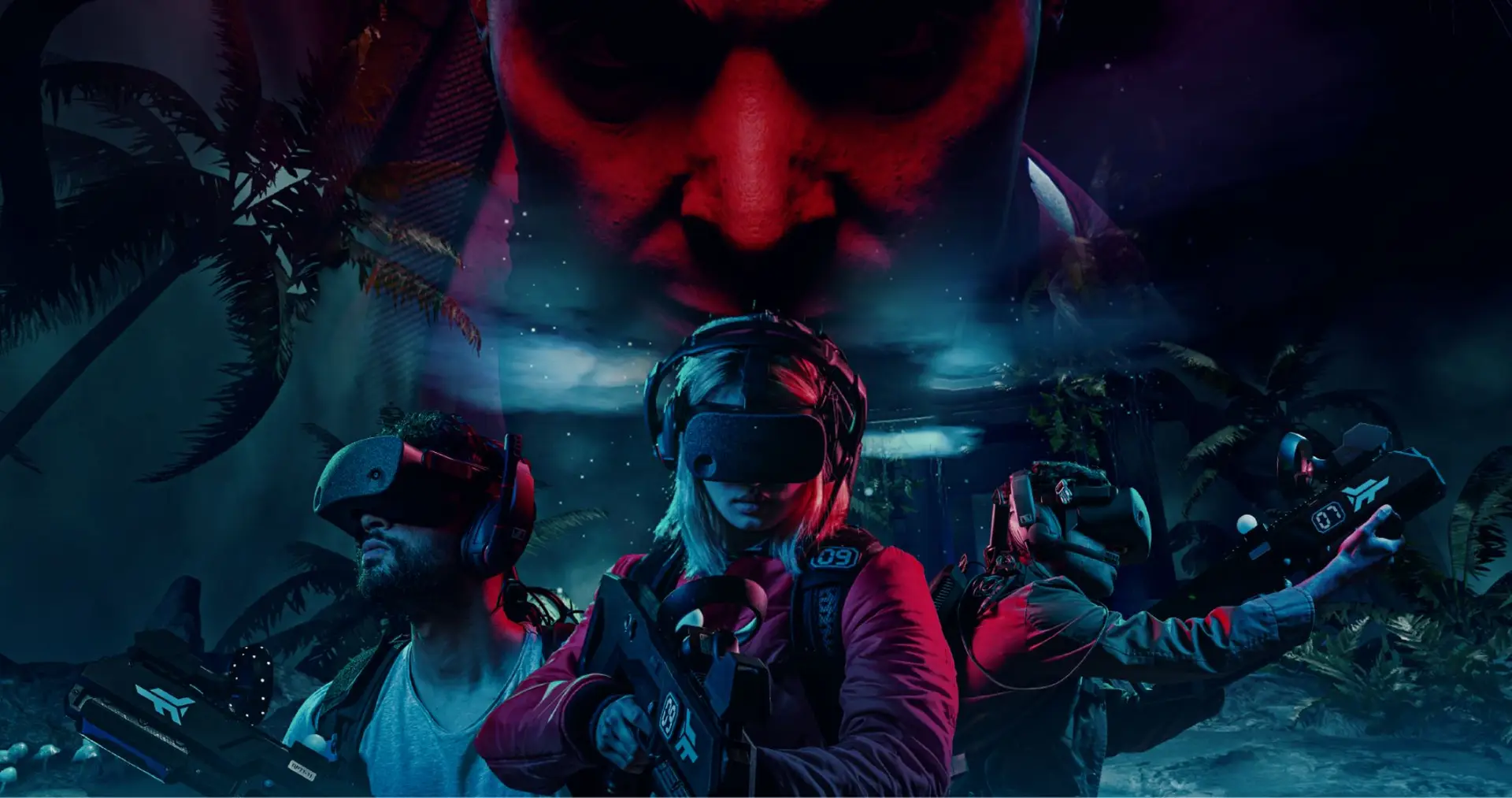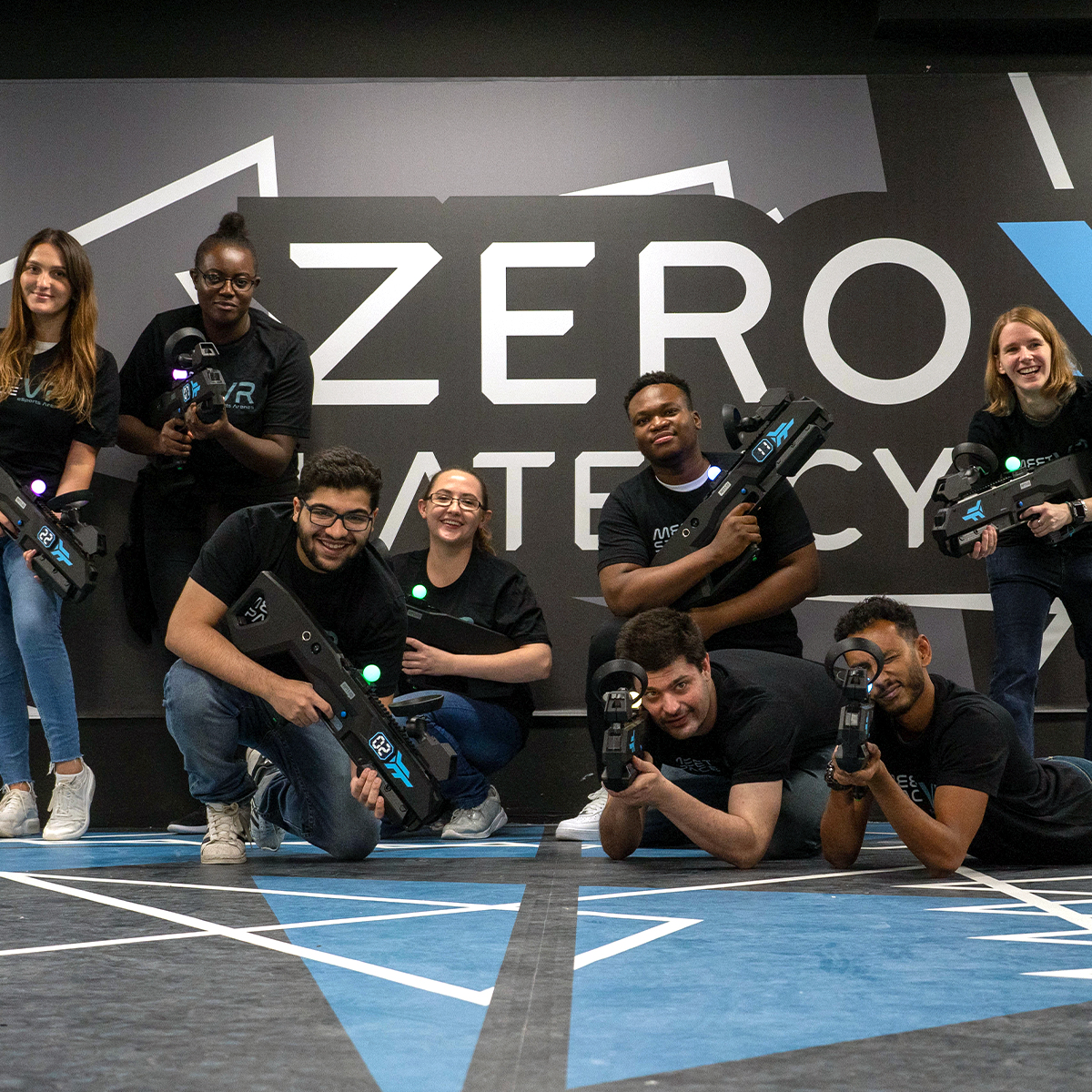Discover an unparalleled virtual reality experience with the Zombie Outbreak game, a heart-pounding adventure that turns you into the last line of defense against a global zombie apocalypse. Set in a research facility that houses the only known cure to a mysterious zombie virus, players in Jacksonville, Florida, are in for an unforgettable thrill.
As the story unfolds, your mission is clear: guard the facility at all costs. However, the stakes are raised when a shadowy enemy breaches the lab in a calculated act of sabotage. It’s now up to you and your team to unite and fight back against this unforeseen threat.
The Zombie Outbreak experience combines intense action with strategic gameplay, challenging players to confront not only the undead but also armed mercenaries intent on seizing the cure for their own nefarious purposes. Will you have the courage and the skill to stop chaos in its tracks?
This immersive game, available at Zero Latency VR, offers an unparalleled virtual reality experience that blends cutting-edge technology with engaging storytelling. Players in Jacksonville have the unique opportunity to step into a world where every decision matters, and the line between survival and downfall is razor-thin.
Whether you’re a seasoned gamer or new to the world of virtual reality, the Zombie Outbreak game promises an exhilarating experience that will leave you on the edge of your seat. So gather your bravest friends, strategize your plan of attack, and step into the action. The fate of humanity rests in your hands.
How Does Virtual Reality Gaming Work?
Virtual reality (VR) gaming is a revolutionary experience that transports players into immersive digital worlds, offering an unparalleled level of interaction and engagement. But how does it manage to create such a convincing illusion of being somewhere else? Let’s dive into the basics of VR gaming.
VR Headsets: The core of VR gaming is the headset, a device equipped with a screen in front of the eyes that displays content in full 3D. Advanced headsets also track head movements, allowing the virtual environment to respond in real-time to how you move your head, enhancing the feeling of presence in the virtual world.
Motion Tracking: Many VR systems use motion tracking technology to follow the movements of the player’s body, hands, and even fingers. This allows for intuitive interactions within the game, such as picking up objects, using tools, or fighting enemies as if you were there.
Immersive Audio: Spatial audio plays a crucial role in VR gaming by delivering sounds from any direction in the 3D space. This not only adds to the realism but also aids in gameplay, allowing players to detect the direction of threats or events happening around them.
Haptic Feedback: Some VR systems include controllers or suits that provide haptic feedback, simulating the sense of touch or the impact of actions in the game. This could mean feeling the recoil of a gun, the strike of an enemy, or the sensation of raindrops, further blurring the line between game and reality.
Room-Scale VR: Certain VR setups allow for room-scale VR, where players can physically move around a designated space. The system tracks their movement within this space and mirrors it in the game, allowing for a more dynamic and engaging experience.
Social and Multiplayer Experiences: VR gaming isn’t just a solitary experience; many games offer multiplayer modes where you can interact with other players in real-time. Whether cooperating on missions, competing against each other, or simply exploring worlds together, VR adds a new dimension to social gaming.
Virtual reality gaming represents a significant leap forward in how we play and experience games. By engaging our senses in ways traditional gaming cannot, VR provides a deeply immersive and interactive form of entertainment that continues to evolve and expand.






